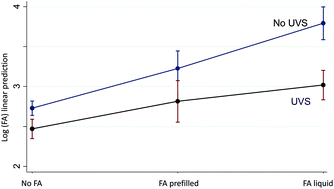Towards a formalin-free hospital. Levels of 15-F2t-isoprostane and malondialdehyde to monitor exposure to formaldehyde in nurses from operating theatres
Abstract
Purpose: nurses are exposed to formaldehyde when managing surgical samples that are to be later transferred to histopathology. We evaluated the conditions favouring the risk of exposure to this toxic reagent and the effect of measures to prevent it. Methods: we conducted a cross-sectional study where 94 female workers were enrolled as being potentially exposed to formaldehyde. From each nurse were collected: (1) personal air-formaldehyde by a personal dosimeter (8 hours), (2) a standardized questionnaire, (3) a urine sample to test 15-F2t-isoprostane, malondialdehyde, cotinine. Results: the results indicate a marked difference related to the adoption of the under vacuum sealing procedure, as an alternative to formaldehyde for preserving tissues. Nurses using the under vacuum sealing system in the operating rooms are exposed to levels of formaldehyde 75% lower than those who do not use that system. Oxidative stress biomarkers (15-F2t-isoprostane, malondialdehyde) are significantly higher in nurses using formaldehyde (p < 0.001) and in the absence of the under vacuum sealing system (p = 0.027), in particular in those workers who use liquid formaldehyde in the operating theatre (p = 0.012). Conclusions: analysis of the biological biomarkers confirms a direct responsibility of air formaldehyde on the onset of oxidative stress while the use of the under vacuum sealing technique is associated with a significant reduction of the exposure to air-formaldehyde and redox status. Our findings can be useful to characterize the environmental health risk in operating theatres and to plan preventive measures such as the under vacuum sealing procedure.


 Please wait while we load your content...
Please wait while we load your content...